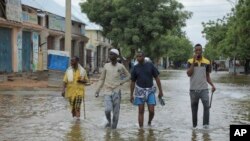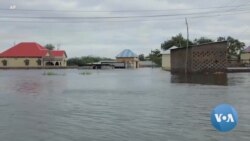The floods have displaced more than 46,000 people, including almost 219,000 women, children and men, according to Stephane Dujarric, the Spokesman for United Nations Secretary-General António Guterres.
He said the incident has left "a trail of destruction" across Somalia, citing inundated homes and farmland as well as the shutdown of health facilities.
The destruction is greatest in the Hiiraan region of the central Somali state of Hirshabelle.
Thousands of families have been displaced in Beledweyne, the regional city with the highest population density. The Shabelle River running through the town burst its banks amid heavy rainfall.
A local resident Hussein Yusuf told The Associated Press that it was the "worst flood we have ever experienced," but said the "floods did not result in any fatalities" in the Beledweyne town.
"These floods differ greatly from the others in the past. This flood is larger than any flooding in recent memory that has ever occurred in this region," he said.
Rising water levels in Beledweyne forced the closure of many important facilities, including government offices and the main hospital, residents said, while expressing fear over a cholera epidemic and malaria outbreak if the floods continue.
"It was very difficult for me to walk this morning because of the amount of water," said Beledweyne resident Abdifitah Ahmed. "As you can see, this situation is getting worse as the amount of water increases."
The U.N. Spokesman said if the rains persist in Somalia and in the Ethiopian highlands, "we estimate that up to 1.6 million people could be impacted, with more than 600,000 displaced."
The Horn of Africa nation faces multiple crises: other parts of Somalia face drought conditions, and there's an ongoing insurgency by Islamic extremist fighters opposed to the federal government.











